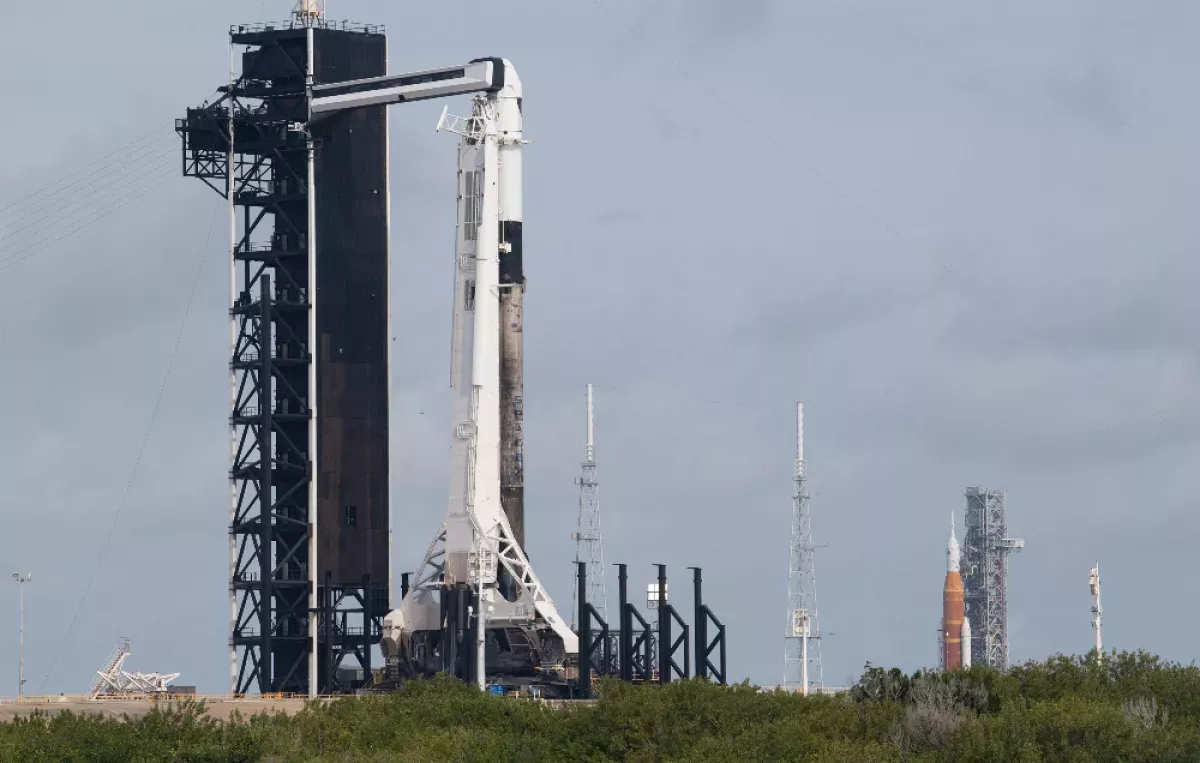Virgin Galactic is a British-American spaceflight company, founded by Richard Branson, aiming to provide suborbital spaceflights to space tourists. The company's spacecraft, like VSS Unity, are air-launched from a carrier plane, White Knight Two. Although Branson initially targeted a maiden spaceflight by 2010, delays, including the 2014 VSS Enterprise crash, pushed it back to 2018. Virgin Group, through Virgin Investments Limited, maintains a significant stake in the company. Headquartered in California, Virgin Galactic operates from New Mexico, marking its presence in the commercial space tourism sector.
May 1996: Creation of the X Prize
In May 1996, the "X Prize" was created.
May 20, 2003: SpaceShipOne Flight 01
On May 20, 2003, SpaceShipOne began its flight program from the Mojave Airport Civilian Flight Test Center with flight 01.
December 2003: SpaceShipOne Achieves Supersonic Flight
On 17 December 2003—the 100th anniversary of the Wright brothers' first powered flight—SpaceShipOne, piloted by Brian Binnie, made its first rocket-powered flight and became the first privately built craft to achieve supersonic flight.
May 2004: Renaming of the X Prize to "Ansari X Prize"
On 6 May 2004, the "X Prize" was renamed the "Ansari X Prize" following a multimillion-dollar donation from entrepreneurs Anousheh Ansari and Amir Ansari.
October 2004: The Ansari X Prize was won by the Tier One project
On 4 October 2004, the 47th anniversary of the Sputnik 1 launch, the Ansari X Prize was won by the Tier One project designed by Burt Rutan and financed by Microsoft co-founder Paul Allen, using the experimental spaceplane SpaceShipOne.
2004: Virgin Galactic Founded
In 2004, Virgin Galactic was founded by British entrepreneur Sir Richard Branson.
2004: SS1 Became World's First Private Spaceship
SS1 became the world's first private spaceship with a series of high-altitude flights in 2004.
2005: The Spaceship Company (TSC) Founded
In 2005, The Spaceship Company (TSC) was founded by Richard Branson through Virgin Group and Burt Rutan through Scaled Composites to build commercial spaceships and launch aircraft for space travel.
February 2007: Virgin Announces Collaboration with NASA
In February 2007, Virgin announced that they had signed a memorandum of understanding with NASA to explore potential collaboration.
July 2007: Explosion at Mojave Spaceport
In July 2007, three Scaled Composites employees were killed and three critically injured at the Mojave spaceport while testing components of the rocket motor for SpaceShipTwo.
July 2007: Accident at Mojave Test Facility
On 26 July 2007, three Scaled Composites employees – Todd Ivens, Eric Blackwell and Charles May – were killed in an accident in Mojave, where the detonation of a tank of nitrous oxide destroyed a test stand. Three other employees were injured in the blast, and the company was fined for breaches of health and safety rules.
July 2008: Branson Predicted Maiden Space Voyage
In July 2008, Richard Branson predicted the maiden space voyage would take place within 18 months.
2008: Production of Follow-On Vehicles Began
Beginning in 2008, TSC started production of the follow-on vehicles.
2008: LauncherOne development initiated
By late 2008, Virgin Galactic had begun working on LauncherOne, an orbital launch vehicle.
2008: Test launches announced for White Knight Two and SpaceShipTwo
In 2008, Virgin Galactic announced that test launches for its fleet of two White Knight Two mother ships and five or more SpaceShipTwo tourist suborbital spacecraft would take place from the Mojave Spaceport. An international architectural competition for the design of Virgin Galactic's operating base, Spaceport America in New Mexico, saw the contract awarded to URS and Foster + Partners architects. Also in 2008, Virgin Galactic announced that it would eventually operate in Europe out of Spaceport Sweden or even from RAF Lossiemouth in Scotland.
October 2009: Virgin Galactic Announced Initial Flights
In October 2009, Virgin Galactic announced that initial flights would take place from Spaceport America "within two years."
December 2009: Richard Branson Unveils Rocket Plane
On 7 December 2009, Richard Branson unveiled the rocket plane, announcing that, after testing, the plane would carry fare-paying passengers ticketed for short duration journeys just above the atmosphere. Virgin Group would initially launch from a base in New Mexico before extending operations around the globe.
December 2009: SpaceShipTwo Unveiled
On 7 December 2009, SpaceShipTwo was unveiled at the Mojave Spaceport.
2009: Technical specifications defined for LauncherOne
In late 2009, the technical specifications were defined in some detail for LauncherOne, an orbital launch vehicle that Virgin Galactic had begun working on.
March 2010: White Knight Two's First SpaceShipTwo Captive Flights
In March 2010, White Knight Two's first SpaceShipTwo captive flights took place.
October 2010: Opening of Spaceport America runway
In October 2010, the 3,000 m (10,000 ft) runway at Spaceport America was opened, with SpaceShipTwo "VSS Enterprise" shipped to the site carried underneath the fuselage of Virgin Galactic's mothership Eve.
2010: Aabar Investments Acquired Stake in Virgin Galactic
In 2010, Aabar Investments group acquired a 31.8% stake in Virgin Galactic for US$280 million, receiving exclusive regional rights to launch tourism and scientific research space flights from the United Arab Emirates capital.
2010: Satellite Business RFPs Planned
In 2010, Virgin Galactic had planned to initiate RFPs for the "small satellite" launch services, but flights had not materialized as of 2014.
2010: Original target for maiden spaceflight
Richard Branson originally hoped to see a maiden spaceflight by 2010, but the date was delayed.
April 2011: Branson Announced Further Delays
In April 2011, Branson announced further delays to the spaceflight program, projecting flights to begin in 18 months.
July 2011: Aabar Invests Further in Virgin Galactic
In July 2011, Aabar invested a further US$110 million to develop a program to launch small satellites into low Earth orbit, raising their equity share to 37.8%.
September 2011: SpaceShipTwo Completed Glide Tests
In September 2011, SpaceShipTwo completed 16 glide tests.
2011: David Mackay Named Chief Pilot
In 2011, David Mackay, former RAF test pilot, was named chief pilot for Virgin Galactic and chief test-pilot.
2011: Small Contract with NASA for Research Flights
In 2011, the collaboration between Virgin and NASA produced a relatively small contract of up to $4.5 million for research flights.
February 2012: SpaceShipTwo Completed Test Flights
By February 2012, SpaceShipTwo had completed 15 test flights attached to White Knight Two.
July 2012: Public announcement of LauncherOne
LauncherOne was publicly announced in July 2012. It was intended to launch "smallsat" payloads of 200 kilograms (440 lb) into Earth orbit. Several commercial customers initially contracted for launches, including GeoOptics, Skybox Imaging, Spaceflight Services, and Planetary Resources. Both Surrey Satellite Technology and Sierra Nevada Space Systems began developing satellite buses "optimized to the design of LauncherOne".
2012: Virgin Galactic Acquired the Remaining Stake in TSC
In 2012, after Northrop Grumman acquired Scaled Composites, Virgin Galactic acquired the remaining 30% of The Spaceship Company.
2012: Virgin Pursues SmallSat Launch Vehicle Development
Since 2012, Virgin had been pursuing the development of a smallsat launch vehicle.
April 2013: Rocket-Powered Test Flight of SpaceShipTwo
On 29 April 2013, a rocket-powered test flight of SpaceShipTwo took place, with an engine burn of 16 seconds duration, reaching a speed of Mach 1.2.
May 2013: Ticket Price Raised to $250,000
In May 2013, Virgin Galactic raised the ticket price for a flight on SpaceShipTwo to $250,000 per person. The initial price was $200,000.
May 2013: Branson to be on First Public Flight
On 14 May 2013, Richard Branson stated he would be aboard the first public flight of SpaceShipTwo, rescheduled to 25 December 2013.
June 2013: Steve Isakowitz Appointed as President
In June 2013, Steve Isakowitz was appointed as Virgin Galactic's president.
August 2013: 640 Customers Signed Up for Flight
By August 2013, 640 customers had signed up for a flight on SpaceShipTwo, which could carry a crew of two and room for six passengers.
December 2013: Branson to be on First Public Flight dressed as Father Christmas
In December 2013, Richard Branson rescheduled the first public flight of SpaceshipTwo again.
January 2014: SpaceShipTwo's Rocket-Powered Test Flight
On 10 January 2014, the third rocket-powered test flight of SpaceShipTwo took place and successfully tested the spaceship's Reaction Control System (RCS) and the newly installed thermal protection coating on the vehicle's tail booms.
February 2014: Cracks Discovered in WhiteKnightTwo
In February 2014, cracks in WhiteKnightTwo, where the spars connect with the fuselage, were discovered during an inspection.
May 2014: Abandonment of Sierra Nevada Corporation Motor
On 23 May 2014, Virgin Galactic announced that they had abandoned use of the Sierra Nevada Corporation (SNC) nitrous-oxide-rubber motor for SpaceShipTwo.
June 2014: Talks with Google About Capital Injection
In June 2014, Virgin announced that they were in talks with Google about the injection of capital to fund both development and operations.
July 2014: Branson's Mother Intends to Go to Space
In July 2014, Branson's mother, Eve, expressed her intention of going to space herself.
July 2014: Sierra Nevada Corporation Confirms Abandonment of Motor
On 24 July 2014, Sierra Nevada Corporation (SNC) confirmed that they had also abandoned use of the nitrous-oxide-rubber motor for their Dream Chaser space shuttle.
September 2014: Branson Describes Intended Date for Commercial Flight
In September 2014, Richard Branson described the intended date for the first commercial flight as February or March 2015.
October 2014: Doubts Raised About Virgin Galactic's Launch Dates
In October 2014, Virgin Galactic's chief executive, George T. Whitesides, questioned the credibility of earlier promises of launch dates.
October 2014: Criticism and Concerns Regarding Virgin Galactic
In October 2014, the BBC science editor David Shukman commented that Branson's enthusiasm and determination were undoubted but his most recent promises of launching the first passenger trip by the end of this year had already started to look unrealistic some months ago.
October 2014: Crash of VSS Enterprise
In October 2014, the crash of VSS Enterprise delayed Virgin Galactic's maiden spaceflight, which Branson had hoped would occur by 2010.
October 2014: Virgin Galactic's Official Statement on SpaceShipTwo Accident
On 31 October 2014, Virgin Galactic released an official statement referring to the test pilots as Scaled Composites employees in response to the SpaceShipTwo crash. One of the Scaled Composites pilots died during the accident.
October 2014: VSS Enterprise Crashed
On 31 October 2014, the fourth rocket-powered test flight of the company's first SpaceShipTwo craft, VSS Enterprise, ended in disaster, as it broke apart in mid-air, with the debris falling into the Mojave desert in California.
November 2014: Criticism of Virgin Galactic after SpaceShipTwo Crash
In November 2014, Branson and Virgin Galactic faced criticism for attempting to distance the company from the SpaceShipTwo disaster by referring to the test pilots as Scaled Composites employees. The accident raised concerns about confidence in the emerging space tourism industry.
November 2014: Report of tension within Virgin Galactic
In November 2014, The Wall Street Journal reported on tension between Richard Branson's optimistic projections and the technical challenges faced by Virgin Galactic, while the company responded affirming its commitment to safety and thorough testing.
November 2014: NTSB Investigates SpaceShipTwo Crash
On 2 November 2014, U.S. National Transportation Safety Board Chairman Christopher Hart stated that investigators had determined SpaceShipTwo's tail system was supposed to have been released for deployment as the craft was traveling about 1.4 times the speed of sound.
2014: First Powered Test Flight Since 2014
April 5 2018 marked the first powered test flight since 2014.
2014: Satellite Business Flights Haven't Materialized
As of 2014, flights for "small satellite" launch services that Virgin Galactic intended to market SpaceShipTwo and White Knight Two for had not materialized.
2014: NTSB Investigation into the 2014 Crash
The NTSB investigated the SpaceShipTwo crash of 2014. The crash was caused by the co-pilot prematurely unlocking a movable tail section, along with inadequate design safeguards, poor pilot training, lack of rigorous FAA oversight, and the co-pilot's lack of recent flight experience.
January 2015: Virgin Invests in OneWeb Satellite Constellation
In January 2015, Virgin Group announced an investment into the OneWeb satellite constellation (WorldVu) to provide world Internet access service. Virgin Galactic was expected to launch the satellites into their orbits using the LauncherOne system.
March 2015: LauncherOne research center established
In March 2015, Virgin Galactic established a 150,000-square-foot (14,000 m) research, development, and manufacturing center for LauncherOne at the Long Beach Airport. The company reported it was on schedule to begin test flights of LauncherOne with its Newton 3 engine by the end of 2016.
March 2015: Intended Date for Commercial Flight
In March 2015, the intended date for the first commercial flight to take place was announced by Richard Branson.
June 2015: Contract signed with OneWeb Ltd.
On 25 June 2015, Virgin Galactic signed a contract with OneWeb Ltd. for 39 satellite launches for its satellite constellation with an option for an additional 100 launches.
July 2015: NTSB Cites Factors in 2014 Crash
On 28 July 2015, the NTSB cited inadequate design safeguards, poor pilot training, lack of rigorous FAA oversight, and a potentially anxious co-pilot without recent flight experience as important factors in the 2014 SpaceShipTwo crash. The co-pilot prematurely unlocked a movable tail section, leading to the craft breaking apart.
2015: New Shepard first unmanned flight
In 2015, Blue Origin's New Shepard first flew unmanned above the Karman line and landed.
2015: Virgin Focuses on SmallSat Launch Business
In 2015, Virgin began to focus more on the smallsat launch business due to multiple delays in the human spaceflight program.
February 2016: Rollout of VSS Unity
On 19 February 2016, the replacement SpaceShipTwo, named VSS Unity, was rolled out following the crash of VSS Enterprise.
August 2016: Ground Tests Completion
In August 2016, test flights for VSS Unity were set to begin after ground tests were completed.
September 2016: Captive Carry Flights Commence
Since September 2016, captive carry flights of VSS Unity had taken place.
October 2016: Mike Moses Replaces Steve Isakowitz as President
In October 2016, Mike Moses replaced Steve Isakowitz as president of Virgin Galactic. Isakowitz moved to Aerospace Corp. to become president and CEO, while Moses was promoted from VP Operations.
December 2016: VSS Unity Completes First Free Flight
In December 2016, VSS Unity completed its first free flight, which was a successful glide test lasting ten minutes.
2016: New Shepard reflown unmanned
In 2016 Blue Origin's New Shepard was reflown unmanned to above the Karman line again.
2016: Collaboration with Boom Technology
In 2016, TSC, Virgin Galactic and the Virgin Group began a collaboration with Boom Technology to develop a supersonic trans-oceanic passenger jetliner. A mission concept review of a Mach 3 vehicle design was carried out.
2016: Planned test flights of LauncherOne
In March 2015, Virgin Galactic reported that they were on schedule to begin test flights of LauncherOne with its Newton 3 engine by the end of 2016.
March 2017: LauncherOne team spun off into Virgin Orbit
In March 2017, Virgin Galactic spun off its 200-member LauncherOne team into a new company called Virgin Orbit.
2017: Virgin Orbit Spun Off
In 2017, Virgin Galactic hived off the satellite launch development of LauncherOne to a separate company, Virgin Orbit.
2017: Cosmic Girl Transferred to Virgin Orbit
In 2017, the Boeing 747-400 aircraft, renamed Cosmic Girl, was transferred to Virgin Orbit with the LauncherOne business.
2017: LauncherOne Business Spun Off into Virgin Orbit
In 2017, the LauncherOne business was spun off into Virgin Orbit.
2017: XCOR Aerospace closed its doors
XCOR Aerospace, which had worked on rocket-powered aircraft, closed its doors in 2017.
January 2018: Seven Glide Tests Completed
By January 2018, seven glide tests of VSS Unity had been completed.
April 2018: VSS Unity Performs Powered Test Flight
On 5 April 2018, VSS Unity performed a powered test flight, the first since 2014.
July 2018: VSS Unity Testing Program Progress
By July 2018, VSS Unity had gone considerably higher and faster in its testing program than its predecessor.
December 2018: VSS Unity Achieves First Suborbital Space Flight
On 13 December 2018, VSS Unity achieved its first suborbital space flight, VSS Unity VP-03, reaching an altitude of 82.7 kilometers and officially entering outer space by U.S. standards.
December 2018: VSS Unity Reaches New Height and Speed
On 13 December 2018, VSS Unity reached a height of 82.7 km above the Earth at speeds close to three times the speed of sound. Mark "Forger" Stucky and Frederick "CJ" Sturckow earned commercial astronaut wings from the US government for the accomplishment.
2018: Virgin Galactic's maiden spaceflight
In 2018, Virgin Galactic's VSS Unity spaceship achieved its maiden spaceflight.
January 2019: Partnership with Under Armour for Space Suits
On 24 January 2019, Virgin Galactic announced a partnership with Under Armour for the fabrication of space suits for passengers and pilots of SpaceShipTwo. Under Armour would also create uniforms for Virgin Galactic employees working at Spaceport America. The full range known as the UA | VG (Under Armour | Virgin Galactic) built with UA's new Intelliknit fabric was revealed later, ahead of Richard Branson's inaugural commercial flight. This range included a base layer, the space suit and footwear.
February 2019: VSS Unity Carries Passenger on Spaceflight
In February 2019, VSS Unity VF-01 carried three people, including a passenger, reaching 89.9 kilometers.
February 2019: VSS Unity Carries Third Crew Member
In February 2019, VSS Unity carried a third crew member (1 in the passenger cabin) for the first time.
October 2019: Virgin Galactic Listed on New York Stock Exchange
On 28 October 2019, Virgin Galactic listed into the New York Stock Exchange, trading under the ticker symbol 'SPCE', becoming the first publicly traded space tourism company. The company raised $450 million through a SPAC merger listing.
February 2020: Transfer to Spaceport America
In February 2020, Virgin Galactic transferred to Spaceport America in New Mexico, and a couple of 15 km altitude test flights were carried out.
November 2020: Test Flight Postponement Due to Covid-19
In November 2020, Virgin Galactic had to postpone a key test flight of its spacecraft due to a surge in the number of Covid-19 cases in New Mexico.
December 2020: Engine Ignition Prevented by Computer Issue
In December 2020, a computer connection issue prevented engine ignition during a Virgin Galactic test flight.
2020: Boom Technology XB-1 Options Expire
In 2020, Virgin Galactic's options for 10 units of the Boom Technology XB-1 "Baby Boom" Supersonic Demonstrator expired.
March 2021: Rollout of VSS Imagine
On 30 March 2021, the first Spaceship III, VSS Imagine, was rolled out, with ground testing planned before glide test flights in Summer 2021.
May 2021: Mothership Eve Carries VSS Unity to Launch Altitude
On 22 May 2021, Mothership Eve was used to carry VSS Unity to a launch altitude of 44,000 feet.
May 2021: VSS Unity Flies Sixth Powered Test Flight
On 22 May 2021, VSS Unity flew its sixth powered test flight, reaching an altitude of 89 km. This suborbital flight marked the first human space flight from New Mexico, piloted by CJ Sturkow and Dave MacKay.
July 2021: Maximum Height Reached
As of July 2021, the maximum height reached by SpaceShipTwo has been 89.9 km.
July 2021: Richard Branson's spaceflight on Unity 22
On 11 July 2021, Virgin Galactic became the first spaceflight company to independently launch a founder of the company into space, having flown founder Richard Branson above the 50-mile (80 km) mark on flight Unity 22. This suborbital flight was accomplished using the twin-fuselage aircraft launch platform VMS Eve, coupled together with VSS Unity. The entire flight lasted approximately one hour, taking off and landing at Spaceport America facility near Truth or Consequences, New Mexico.
July 2021: VSS Unity Fully Crewed Test Flight and Airspace Incident
On 11 July 2021, a fully crewed test flight of VSS Unity took place with two pilots and four passengers, including Richard Branson. The flight was initially claimed to be successful, but it was later revealed that Unity briefly stepped outside the reserved airspace, and the FAA was not informed as required. Consequently, the FAA grounded Virgin Galactic's space planes until changes to procedures were implemented.
July 2021: Richard Branson Flies to Space
On 11 July 2021, founder Richard Branson and three other employees rode on VSS Unity 22 as passengers, marking the first time a spaceflight company founder has travelled on his own ship into outer space.
July 2021: Blue Origin's first crewed flight
On 20 July 2021, Blue Origin flew their first crewed flight and first paying customer, Dutch teenager Oliver Daemen. Also on the flight were Bezos himself, his younger brother, and aviation legend Wally Funk.
July 2021: Virgin Galactic flight rescheduled
Shortly after the announcement of competitor Blue Origin's plans to fly Amazon founder Jeff Bezos into space on 20 July 2021, the Virgin Galactic flight was rescheduled to occur on 11 July 2021.
August 2021: Price of Virgin Galactic spaceflight
In August 2021, the price for a Virgin Galactic spaceflight was US$450,000 per person.
October 2021: Virgin Galactic Announces Upgrade Program, Delaying Commercial Flights
On 14 October 2021, Virgin Galactic announced that an upgrade program for Unity and Eve would begin, delaying future commercial flights to mid-2022 due to material analysis requirements.
Feb 2022: Virgin Galactic in final phases of returning to commercial service
In February 2022, Virgin Galactic stated it was in the final phases of returning its suborbital spaceplane to commercial service.
February 2022: Public Ticket Sales Opened
In February 2022, Virgin Galactic announced that it was opening ticket sales to the public for $450,000.
2022: Delayed Commercial Flights
On 14 October 2021, Virgin Galactic announced that an upgrade program for Unity and Eve would begin, delaying future commercial flights to mid 2022 due to material analysis requirements.
May 2023: Virgin Orbit Shut Down
In May 2023, the spin-off company Virgin Orbit was shut down.
June 2023: First Commercial Space Tourism Flight
In June 2023, Virgin Galactic launched its first commercial space tourism flight called Galactic 01.
June 2023: First commercial flight
On 29 June 2023, Virgin Galactic's first commercial flight took place with three outside passengers for the Italian Air Force and the Italian National Research Council. The 70-minute mission was purchased for the Italian Air Force and the Italian National Research Council. The company at the time had a backlog of 800 or so individuals who've bought tickets to ride on Unity. The approximate launch cadence at the time was about one launch a month.
2023: Boeing Sues Virgin Galactic Over Unpaid Bills
In 2023, Boeing ended work on the contract and filed suit against Virgin Galactic over unpaid bills, according to a report in SpaceNews.
2023: Virgin Orbit Ceases Operations Following Bankruptcy
In 2023, Virgin Orbit ceased operations following bankruptcy.
2023: Virgin Orbit bankruptcy
Virgin Orbit, which was spun off from Virgin Galactic, went bankrupt in 2023 after a few space launches.
June 2024: Final Flight of Unity
In June 2024, Galactic 07 was the final flight of Unity as the company shifted focus to its Delta class vehicles and a higher launch cadence.
2024: VSS Unity spaceplane flights ceased
Virgin Galactic ceased flights of its VSS Unity spaceplane in mid-2024 to focus on developing its next-generation Delta-class spacecraft.
February 2025: Estimated Ticket Cost
In February 2025, a ticket for a seat is estimated to cost about $600,000.
2025: Delta class spaceship testing
In 2025, Virgin Galactic plans to have its third generation spaceship, the Delta class, ready for testing, along with the next generation of mothership.
2025: Generation 2 Motherships Expected
Virgin Galactic plans to have generation 2 motherships ready for 2025, for the next-generation Delta-class spaceplanes.
2026: Delta-class spacecraft commercial service to commence
Virgin Galactic ceased flights of its VSS Unity spaceplane in mid-2024 to focus on developing its next-generation Delta-class spacecraft. This strategic shift aims to enhance flight frequency and operational efficiency, with the Delta-class vehicles expected to commence commercial service by 2026.
2026: Delta class commercial flight
Virgin Galactic plans to have its third generation spaceship, the Delta class, ready for commercial flight in 2026.
Mentioned in this timeline
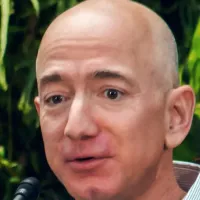
Jeff Bezos is an American businessman renowned as the founder...
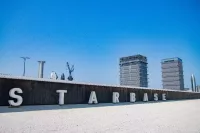
SpaceX founded in is a private American aerospace manufacturer and...
Under Armour is an American sportswear company based in Baltimore...
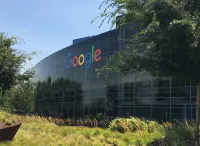
Google LLC is a multinational technology company specializing in online...
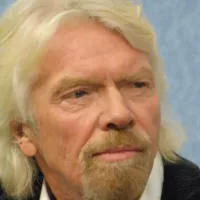
Richard Branson is a prominent English business magnate best known...
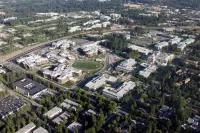
Microsoft an American multinational technology corporation headquartered in Redmond Washington...
Trending
1 month ago World Cup 2026 Draw: Brazil in Group C, France's Path
2 months ago India-Bangladesh Ties Strained as Hasina Faces Potential Execution; Extradition Unlikely.
2 months ago DHS immigration crackdown hits Charlotte, sparking protests and local confusion.
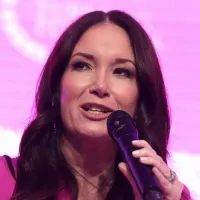
2 months ago Brooke Rollins' SNAP Benefits Criticism Sparks Controversy; Johnson Intervenes After 'Failed You' Comment.

3 months ago Marjorie Taylor Greene breaks with GOP on Obamacare, citing disgust over potential premium hikes.

8 months ago Derek Carr's Retirement Announcement and Injury Concerns in New Orleans Saints Saga
Popular

Stranger Things created by the Duffer Brothers is a popular...

XXXTentacion born Jahseh Dwayne Ricardo Onfroy was a controversial yet...

Kelsey Grammer is an accomplished American actor producer and singer...

Candace Owens is an American conservative political commentator and author...

Bernie Sanders is a prominent American politician currently serving as...

Melania Trump a Slovenian-American former model has served as First...
